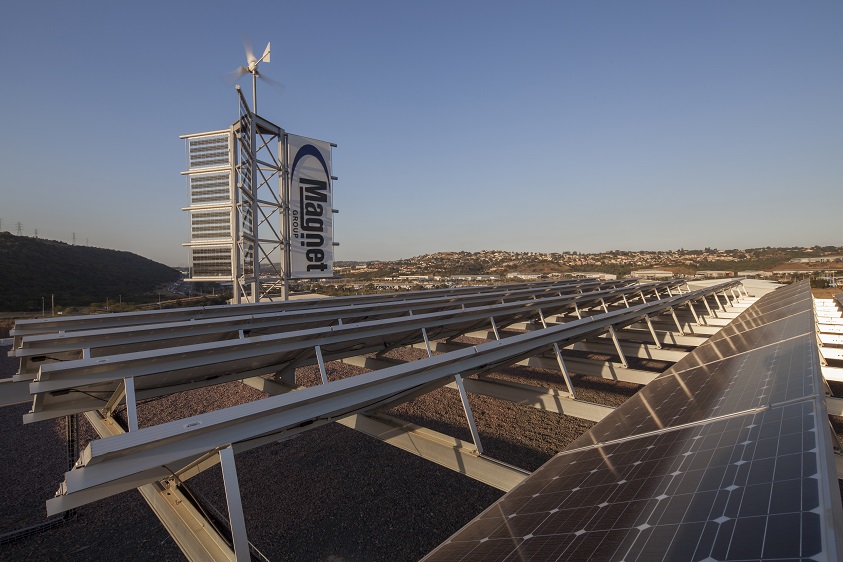In the first article of this series, we outlined the differences between the main types of batteries – Lead Acid and Lithium-ion:
1. Lead Acid
This type of battery has been used for solar energy storage since the very beginning, and it continues to be a popular choice. There is a flooded lead-acid option, and its counterpart, sealed lead-acid. In sum, lead acid batteries require regular maintenance and they have a longer charge time.
2. Lithium-ion
Lithium-ion batteries are considered to be the most efficient battery type. However, they are not cheap – these batteries generally carry the highest cost, depending on the brand. Advantages of these batteries are that they are completely maintenance-free, and generally more compact than lead acid. Moreover, lithium-ion batteries require a much shorter charge time than lead acid.
Click here to learn more about the types of batteries.
In this article, we’re giving you a basic understanding of battery sizing and selection...
How do you size batteries for your specific application?
Battery sizing is one of the most important considerations when choosing the specifics of your solar or back-up power system.
The main objective when sizing a battery bank is to get one that can handle the load coming from the municipal grid or your PV panel array. Moreover, your battery bank needs to provide enough stored power for your needs, without having to regularly discharge to an unhealthy point.
Here are a few considerations when sizing batteries:
- Calculating your load
Figuring out how much battery storage you may need in amp hours (AH), isn’t quite as challenging as you may think. In order to size your battery correctly, it is vital that you know what loads (lights, appliances, power supplies, etc.) you would like to back up on the system, and the duration the load needs to operate during an outage or none-sunshine periods.We have a Power Profile tool to help you out with this! Click here to download now!
- Battery autonomy
Take into account the number of hours or days you want to be able to go before needing to recharge your batteries. If you need to power certain appliances for a specific number of hours (or even days) at a time, without interruption, you’ll need more batteries to carry a bigger load.
- Hybrid Solar Systems
A solution for load shedding is a Hybrid system. Like Grid-tied systems, hybrid systems are also interconnected to the local electrical authority, however, these systems have batteries as a back-up.Click here to learn more about the different types of solar systems.
When sizing a battery bank for a solar system, the following should be considered:
- cloud coverage
- voltage drop
- ambient temperature of the area where the batteries will be stored
- method of installation
- power fluctuations
- energy loss due to wear on the system
Battery selection
Now that you’ve sized your battery, how do you go about selecting the right battery for your application? Here are a few considerations to bear in mind:
- Cost
Are you prepared to spend less now, and much more later. Or is it feasible for you to spend more now, and significantly less later? In the end, as with most things in life, you get what you pay for. Bear this in mind when considering brands of batteries and the maintenance they require.
- Application
Knowing how often the batteries will be cycled is important for battery selection. Consider this from the aspect of application – what do you require battery storage for e.g.: to mitigate the impact of an unreliable grid (load shedding) or to reduce your dependence on the grid (energy-saving); or do you want to go completely off-grid? The latter usually always requires cycling of the batteries.
- Usable Depth of Discharge
Depth of Discharge (DoD) refers to the percentage of the battery that has been discharged, relative to the overall capacity of the battery. For example, if you have a battery that holds 5 kilowatt-hours (kWh) of electricity, and you discharge 4kWh, the DoD is approximately 80%. The DoD depends on the type of battery you choose. A typical Lead-Acid battery option has a DoD of around 50%. A typical Lithium-ion solar battery option has a DoD of between 80%. This comes into play when calculating your solar battery needs.
- Battery charging
To charge a battery, a battery charger must be included in your solar or back-up power system.
- System monitoring
Metering assists you in reading the status of the system. Most charge-controllers have features such as indicator lights and readouts already built-in. Consider including devices that monitor voltage and current, record amp-hours, and accurately display the state-of-charge of the battery bank. More detailed information is also captured, which can be useful for troubleshooting. The monitor may be mounted in another room or building, for easy access.
Are you interested in a solar or back-up power solution? Click here to chat to our experts now!
SHOP batteries on the Magnet Store now!



